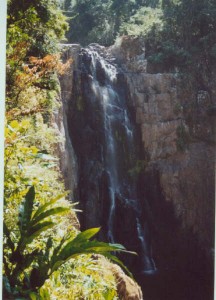I love waterfalls, and it seems that during my recent science traveling excursions to Norway, Canada, and Connecticut I saw a lot of waterfalls. So for this edition I thought I would show you some video of a few great falls. Be sure to turn on the volume for your monitor to hear the impressive roar of the water.
Kent Falls: Not surprisingly, these namesake falls are in Kent State Park in Kent, CT. This was a stop coming back from Quebec in early July.
Montmorency Falls: Just above Quebec City is a wonderful surprise. These falls are one and half times the height of Niagara. I wrote more about Montmorency in this previous post.
Kjosfossen Falls: Back in May when we traveled to three Scandinavian countries I saw some amazing waterfalls. This one jumps out at you when traveling the railway through the mountains towards the fjords in central Norway.
Naeroyfjord Falls: As part of the “Norway in a Nutshell” tour, which involves a train, another train, a boat, a bus, and another train as you make your way from Oslo to Bergen (plus another train from Bergen back to Oslo the next day), you spend a few hours in the fjords. There are literally hundreds of waterfalls, and that is not an overstatement. One of the most spectacular is this one as you first turn into Naeroyfjord.
I’ll have more details on these in the future. For now, turn up your sound, go full screen, and enjoy the waterfalls.
David J. Kent is an avid science traveler and the author of Lincoln: The Man Who Saved America, in Barnes and Noble stores now. His previous books include Tesla: The Wizard of Electricity (2013) and Edison: The Inventor of the Modern World (2016) and two e-books: Nikola Tesla: Renewable Energy Ahead of Its Time and Abraham Lincoln and Nikola Tesla: Connected by Fate.
Check out my Goodreads author page. While you’re at it, “Like” my Facebook author page for more updates!













